|
TUNING A HAND PLANE
1
Sharpen
the plane iron at
25 degrees for general work — a few degrees less if you work mostly with
soft woods, a few degrees more for extremely hard woods or heavy-duty planing.
A bit of tool-savvy: If there is a trick to using a hand plane,
proper sharpening
is 90% of it. The iron must be razor sharp and the cutting edge every
bit as straight as the plane's sole is flat.
2
If the plane has an adjustable mouth, open it to 1⁄8 inch wide or
more for rough cuts, 1⁄8 inch wide or less for fine cuts. You can also
adjust it to control tear-out — close it down if the wood is tearing. |
|
3
If the plane has a chip breaker, position it 1⁄16 inch or more from the cutting edge for rough cuts, 1⁄16
inch or less for fine cuts. You may also want to adjust it for the type
of wood — more for softwoods, less for hardwoods.
4 Advance the iron until it’s flush
with the mouth, and adjust it so the cutting edge is parallel to the
sole.
5
Retract the iron into the mouth, then slowly advance it as you
make test cuts on a scrap board. Stop when the plane is cutting
paper-thin shavings the full width of the iron. |
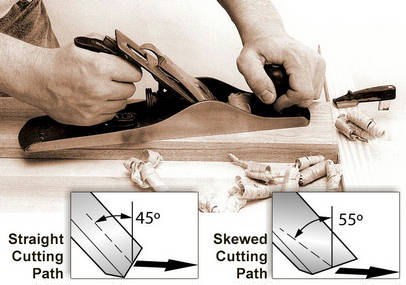
PLANING AT A
SKEW
Keep the plane sole flat on
the board as you cut. It’s easier to push the plane — and you’ll get a
finer cut — if you hold the plane at a slight angle to its direction of
travel. This effectively increases the cutting angle so the plane iron
is shaving the wood from a lower angle. |
|
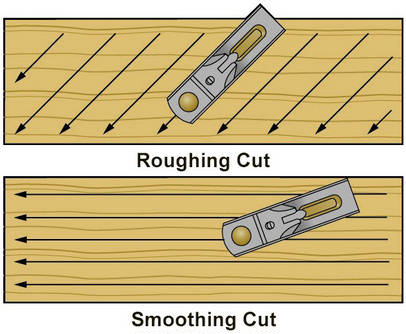
ROUGHING AND
SMOOTHING
When you want to remove stock
for a board quickly, plane at a steep diagonal to the wood grain. This
is called a roughing cut, and it does not leave a particularly smooth
surface. When a smooth surface is important, make a smoothing cut by
passing the plane across the wood parallel to the grain. |
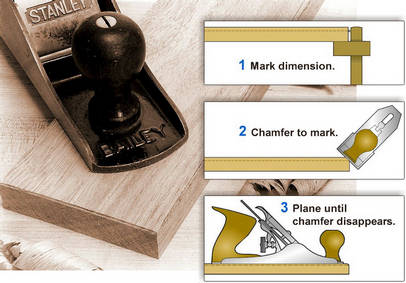
PRECISION PLANING
To
plane a board to a precise dimension, mark all around the outside of the
board. Holding the plane at an angle, chamfer the corners of the board
down to the lines you’ve marked. Then plane the surface of the board
until the chamfers disappear. A bit of tool-savvy: Use a variation of this technique
to cut a precise chamfer. Mark the chamfer on both adjoining surfaces,
and plane down to the marks. |
|
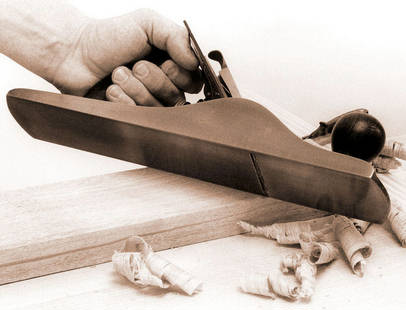
CHECKING YOUR
WORK
1
To check that you’re planing
a flat surface, use the edge of the plane as a straightedge
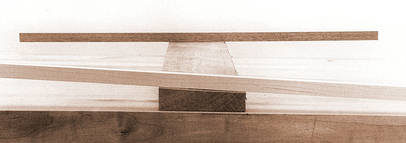
2
You
can also sight along a pair of winding sticks to identify high and low
spots and other distortions in the work. |